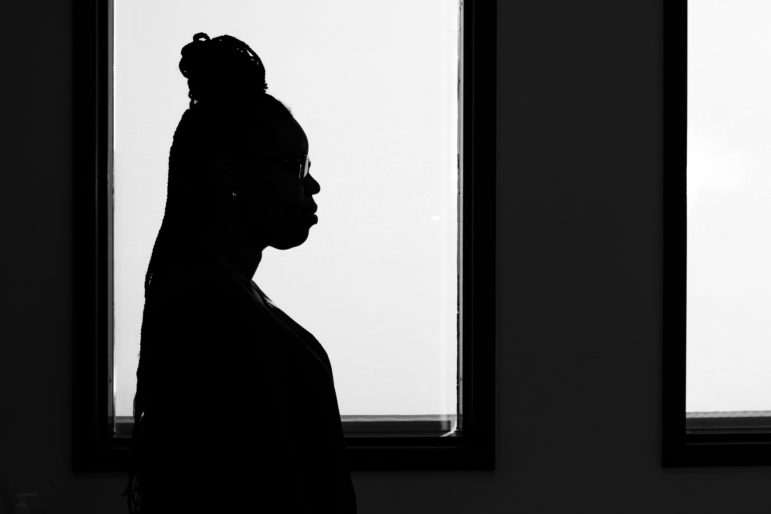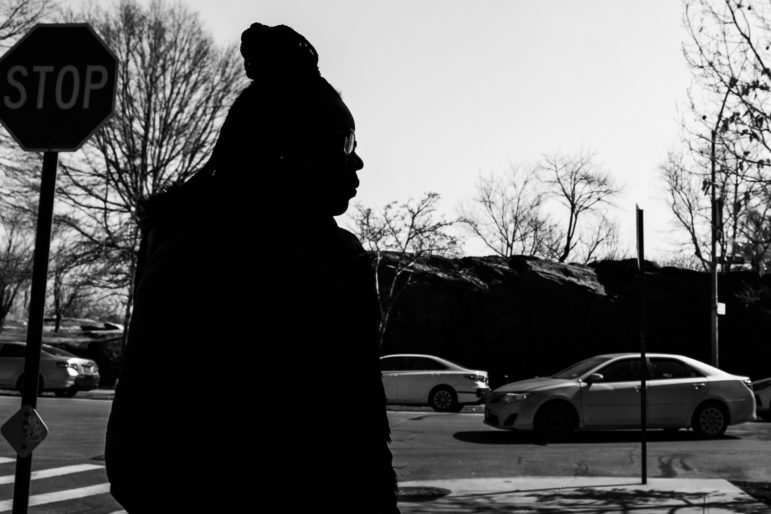Amid New York City’s ongoing homelessness crisis, the length of time it takes NYCHA to rent out available apartments has more than doubled over the last five years. At the same time, the number of people moving from Department of Homeless Services (DHS) shelters into public housing has plummeted.

Adi Talwar
Natasha Logan has been waiting to get possession of a NYCHA apartment that was allocated to her nearly a year ago. In the interim, Logan is living at a shelter.Natasha Logan got the good news in September 2020. After more than a decade on the NYCHA waiting list, she was found eligible for an apartment.
Soon, she figured, she would be able to move out of a College Point homeless shelter and into a place of her own. And by May 2021, things were looking up: A one-bedroom apartment had opened at the Ingersoll Houses, across the street from Fort Greene Park. She visited the fifth-floor unit on May 24, took some photos and learned that the apartment needed a paint job and new appliances—easy fixes—before she could move in.
But 10 months after that apartment visit, Logan is still living in the College Point shelter, where she has weathered three COVID surges and chemotherapy to treat her breast cancer. She’s not sure what’s taking so long.
“At first, it was, ‘They have to do the minor repairs, this has to be done.’ Then it was, “It’s not ready, it’s not ready,’ then, ‘It’s ready, but they have to fix the gas,’” she said, recounting conversations with NYCHA staff over the past year. “They kept going around in circles about what needs to be done.”
She’s not alone. Amid New York City’s ongoing homelessness crisis, the length of time it takes NYCHA to rent out available apartments has increased—from about 45 days in the 2017 fiscal year to 98 days in fiscal year 2020 to 114 days in 2021, according to agency data. For Logan, it’s been 304 days since that apartment visit.
At the same time, the number of people moving from Department of Homeless Services (DHS) shelters into NYCHA apartments has plummeted—from 1,871 applicants in 2020 to 1,058 applicants in 2021, the agency said.
“NYCHA continues to face challenges in prepping and turning over units as they require extensive work, especially in the areas of carpentry, plastering, painting and lead testing and/or abatement,” NYCHA spokesperson Rochel Leah Goldblatt wrote in an email, quoting text from the most recent Mayor’s Management Report.
In recent weeks, City Limits has reported on various hurdles to housing for homeless New Yorkers, like the administrative demands that hinder rental assistance vouchers, delays in filling hundreds of vacant supportive housing units, and pervasive source of income discrimination facing minimal enforcement.
The lengthy wait time for available NYCHA apartments is just one more obstacle for New Yorkers trying to move out of shelters, said Coalition for the Homeless Policy Director Jacquelyn Simone.
“Every city agency needs to work with much greater urgency in helping people move into permanent housing as quickly as possible,” Simone said. “These months-long delays prolong someone’s homelessness. They’re unwise from a fiscal perspective and wrong from a moral perspective.”
NYCHA has been plagued for years by funding shortfalls and repair backlogs, worsened, the agency says, by the pandemic. But unlike housing vouchers used on the private market, a move from a DHS shelter to an apartment in public housing is entirely within the city’s control, Simone added.
“Given that someone is languishing in a city shelter for months on end should signal that the city should be doing more to make these apartments habitable,” she said.
Families in homeless shelters receive priority for available NYCHA units, after former Mayor Bill de Blasio reversed his predecessor Mike Bloomberg’s decision to sever the link between homelessness and space in public housing. That policy has enabled thousands of people to move from shelters to NYCHA apartments since 2014.
The current lease-up delays likely extend to all applicants, not just New Yorkers moving in from shelters, said Dr. Alex Schwartz, a public housing expert and chair of the Public and Urban Policy Program at the New School. “It’s a sclerotic issue in general,” Schwartz said. “It takes a long time.”

Adi Talwar
March 14, 2022: Natasha Logan has been waiting to get possession of a NYCHA apartment that was allocated to her nearly a year ago. In the interim, Logan is living at a shelter.
Asked about Logan’s specific case on March 11, Goldblatt said the apartment would be ready by the end of last week. That deadline passed with Logan left in the shelter, unable to get an answer about when she can move in.
In late-January, NYCHA said Logan’s apartment tested negative for lead paint and that staff had replaced a refrigerator, repaired a busted stove and caulked around the kitchen sink. At the time, they were waiting on painters to finish a closet and foyer wall. NYCHA also resolved a months-long gas outage affecting tenants at the Ingersoll Houses in December 2021.
While she waits to finally move, Logan has held down a job at a supportive housing site in Washington Heights, where she counsels and handles leasing for formerly homeless adults and young people who have aged out of foster care. “I’m aware of the problems the tenants have gone through,” she said.
Logan moved into a homeless shelter following the death of her mother. She said she could no longer afford the rent and bills on her own so she gave up the apartment and began staying with family members. Space was tight and she found she could not afford an apartment on her own, so she ventured to a shelter intake facility for women in January 2020. Two months later, COVID hit New York.
“I might have had a place by now if it wasn’t for COVID,” she said.
Life in shelter poses difficulties and restrictions. At times, she said, she has received a pass to return to the facility after the 10 p.m. curfew without losing her bed, but that usually means dealing with night-shift staff tasked with verifying her placement. That can take hours, she said, forcing her to wait until just before dawn to finally return to the living quarters. By then, it’s almost time to start her commute.
“Now I’m rushing to take a quick shower and get back to work,” she said.
The delayed move has also forced her to spend thousands of dollars on storage and meals that she would have otherwise prepared at home. She said her bill for two Brooklyn storage units is about $400 a month.
“It’s frustrating because you have a whole apartment but I’m putting everything on hold,” she said. “You would think I’m moving into a mansion.”








